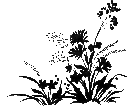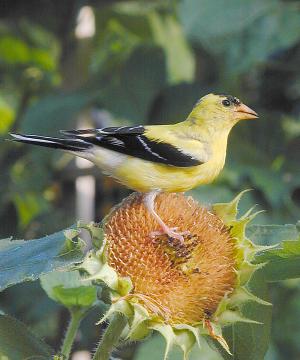 |
The Preserve |
News and Events |
Natural History |
The Trail |
Monitoring |
Restoration |
Library |
Organization |
|
Todmorden Mills Wildflower Preserve
|
Nature NotesYour nature guide for the week June 28-July 4Bird song is on the wane, but meadow flowers and their attendant insects are coming on-stream.Birds
There are, however, some birds that are late breeders or that may have more than one brood and thus continue singing a little longer. Red-eyed Vireos keep singing from high up in the canopy well into summer. Some species, such as Robin, may have a second brood, and they continue to sing. Song Sparrows have up to three broods, and will be heard well into the fall, especially in the evening. Out in the meadow the American Goldfinch, often thought of as a wild canary because of the male's bright yellow plumage and its cheery song, is just beginning to nest. Goldfinches likely time their nesting to coincide with the flowering and then fruiting of meadow plants such as asters, sunflowers and thistles. Canada Thistle, actually introduced from Europe and not really "Canadian" at all, has just started to flower at Todmorden. Goldfinches will collect thistle down to line their nest, and the ripe seeds are fed to the chicks. FlowersCommon Milkweed has started flowering and the sweet, vanilla-like fragrance is particularly heady on an evening walk through the meadow. Bees, moths, and butterflies are attracted to the flowers to obtain nectar rewards, but for some, particularly the European Skipper butterfly, visits are not without risks. When a skipper perches on a flower to lap nectar it can get its legs caught in the slots between the partly-fused anthers. Normally, it is able to extract its legs, and in doing so it "pops" the top off the anther and detaches a pollen packet. Occasionally, however, it gets its legs jammed between the anthers and it becomes trapped, sometimes until it dies. On the woodland trail this week, look for the spectacular Tall Meadow Rue with its dainty white clusters, and the Hedge Bindweed, a trailing vine with pink trumpet-like flowers which resemble the popular garden plant, Morning Glory. Both can be viewed pond-side of the boardwalk. Purple-flowering Raspberry continues to flower at several sunnier places along the trail. In the meadow, the pea-like purple flowers of Cow Vetch stand out among the grasses. The shrub with white flat-topped flower clusters is Common Elderberry. It has been planted at the pond, and there is a spectacular stand on the eastern oxbow slope beside the vehicle bridge. Frogs and TurtlesThe Red-eared Slider turtles are wary but a quiet approach should reward you with views of them basking on logs in the pond. Last year's Green Frog tadpoles overwintered and have now transformed into juvenile frogs. Juveniles usually leave the home pond and disperse. Males will not be fully adult until next year; females can take two years to reach sexual maturity. Nature Notes is researched and written by Mike Dennison and Alejandro Lynch, and is published each week by Hopscotch Interactive (www.hopscotch.ca). In addition to this online version, Nature Notes is available as a print-friendly PDF and as a text-only email version. Please contact Mike Dennison to receive these, or for more info (tel: 416-696-7230, email: dennison@hopscotch.ca). |
| Copyright © 2003-2004 Todmorden Mills Wildflower Preserve |
